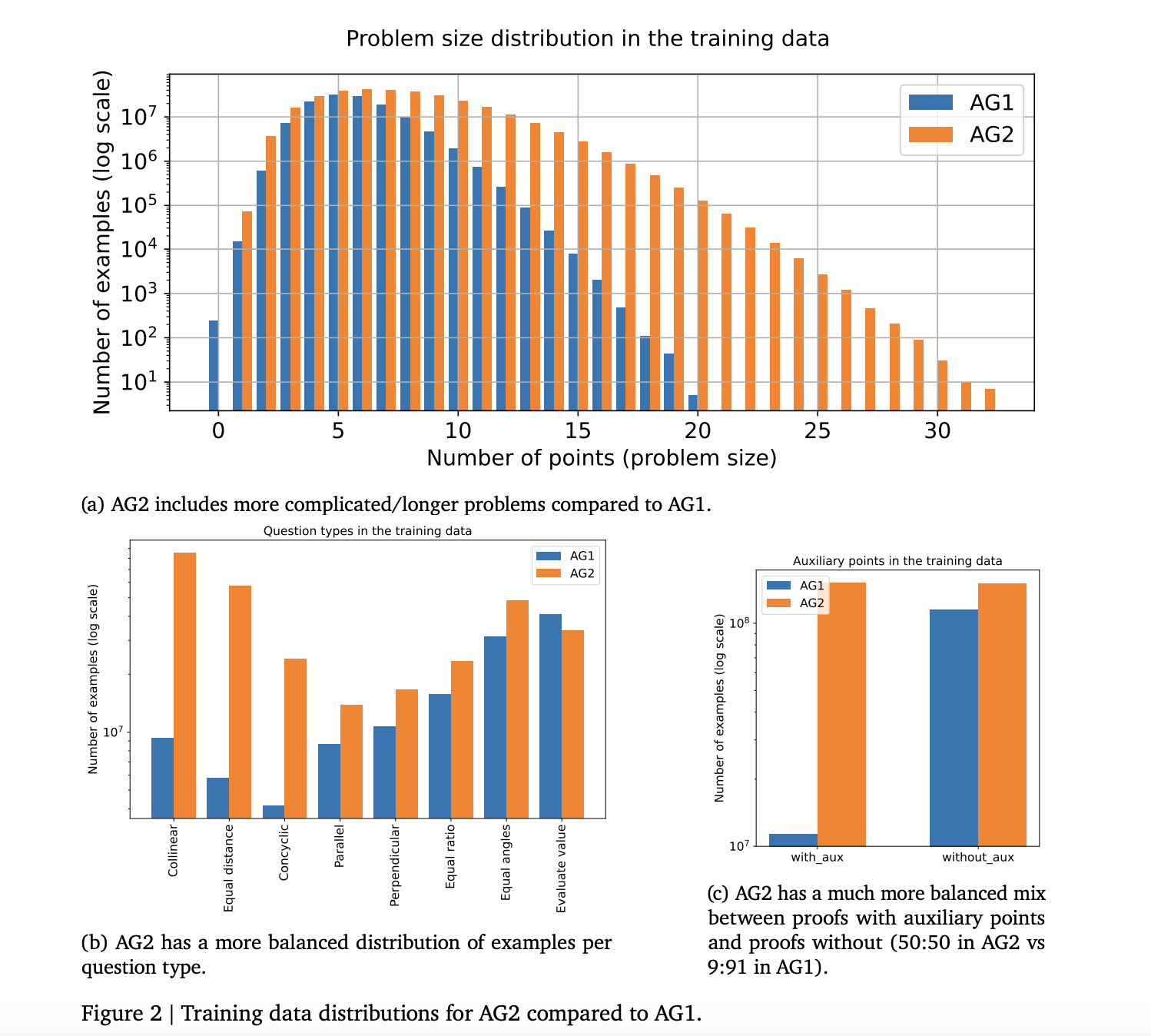
Introduction to AlphaGeometry2
The International Mathematical Olympiad (IMO) is a prestigious competition for high school students, focusing on challenging math problems. Geometry is a key area in this competition, and automated solutions have evolved significantly.
Advancements in Automated Geometry Problem-Solving
Traditionally, there were two main methods for solving geometry problems: algebraic methods and synthetic techniques. The latter is more aligned with human reasoning and is essential for broader research applications.
AlphaGeometry1 Overview
AlphaGeometry (AG1) was an early neuro-symbolic system that combined a language model with a reasoning engine to tackle IMO geometry problems. Although it achieved a 54% success rate from 2000 to 2024, it faced challenges due to limitations in its language and reasoning capabilities.
Introducing AlphaGeometry2
AlphaGeometry2 (AG2) represents a significant leap forward, outperforming the average IMO gold medalist. Developed by researchers from Google DeepMind and other institutions, AG2 has expanded its language to cover more complex geometric concepts, increasing its problem-solving coverage from 66% to 88%.
Key Features of AlphaGeometry2
- Improved Success Rate: AG2 achieves an 84% solve rate on IMO geometry problems from 2000-2024.
- Enhanced Language Model: Incorporates a Gemini-based language model for better understanding of natural language problems.
- Efficient Symbolic Engine: A new symbolic engine and search algorithm improve deduction and proof search capabilities.
- Support for New Problem Types: AG2 can now handle locus problems and improve diagram formalization.
Performance Highlights
AG2 successfully solved 42 out of 50 benchmark problems and all 30 of the hardest formalizable problems. It shows rapid improvement, solving 27 problems after just 250 training steps. Despite some unresolved issues, its solutions are recognized for their creativity.
Future Directions
While AG2 has made significant strides, challenges remain, particularly in handling inequalities and variable points. Future efforts will focus on refining auto-formalization and exploring reinforcement learning to enhance problem-solving capabilities.
Conclusion
AlphaGeometry2 marks a major improvement over its predecessor, achieving an 84% success rate on geometry problems. It demonstrates the potential of AI in solving complex mathematical challenges and aims to develop a fully automated system for efficient problem-solving.
Get Involved
For more insights and updates, check out our research paper, follow us on Twitter, and join our Telegram Channel and LinkedIn Group. Join our 75k+ ML SubReddit community for ongoing discussions.
Transform Your Business with AI
To stay competitive, consider how AI can enhance your operations:
- Identify Automation Opportunities: Find areas in customer interactions that can benefit from AI.
- Define KPIs: Ensure your AI initiatives have measurable impacts.
- Select an AI Solution: Choose tools that fit your needs and allow customization.
- Implement Gradually: Start with a pilot project, gather data, and expand wisely.
For AI KPI management advice, connect with us at hello@itinai.com. For continuous insights, follow us on Telegram or Twitter.
Explore AI Solutions
Discover how AI can transform your sales processes and customer engagement. Visit itinai.com for more information.


























